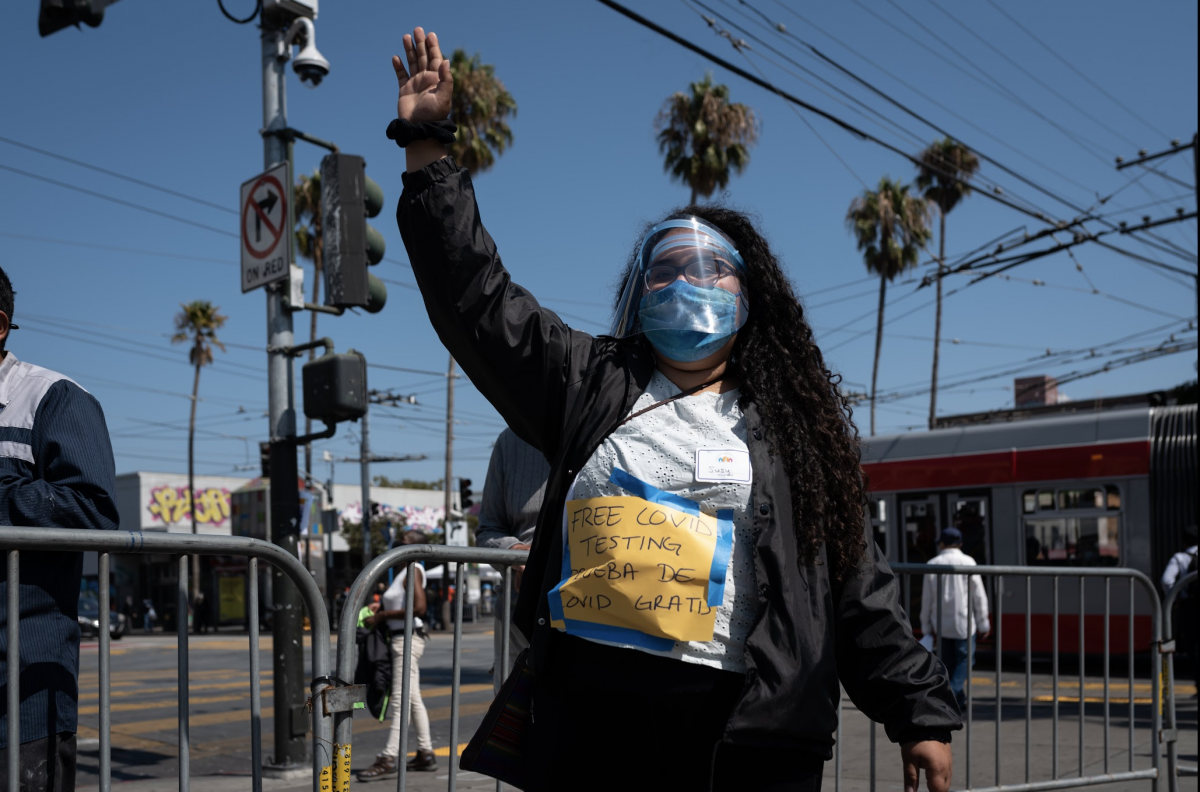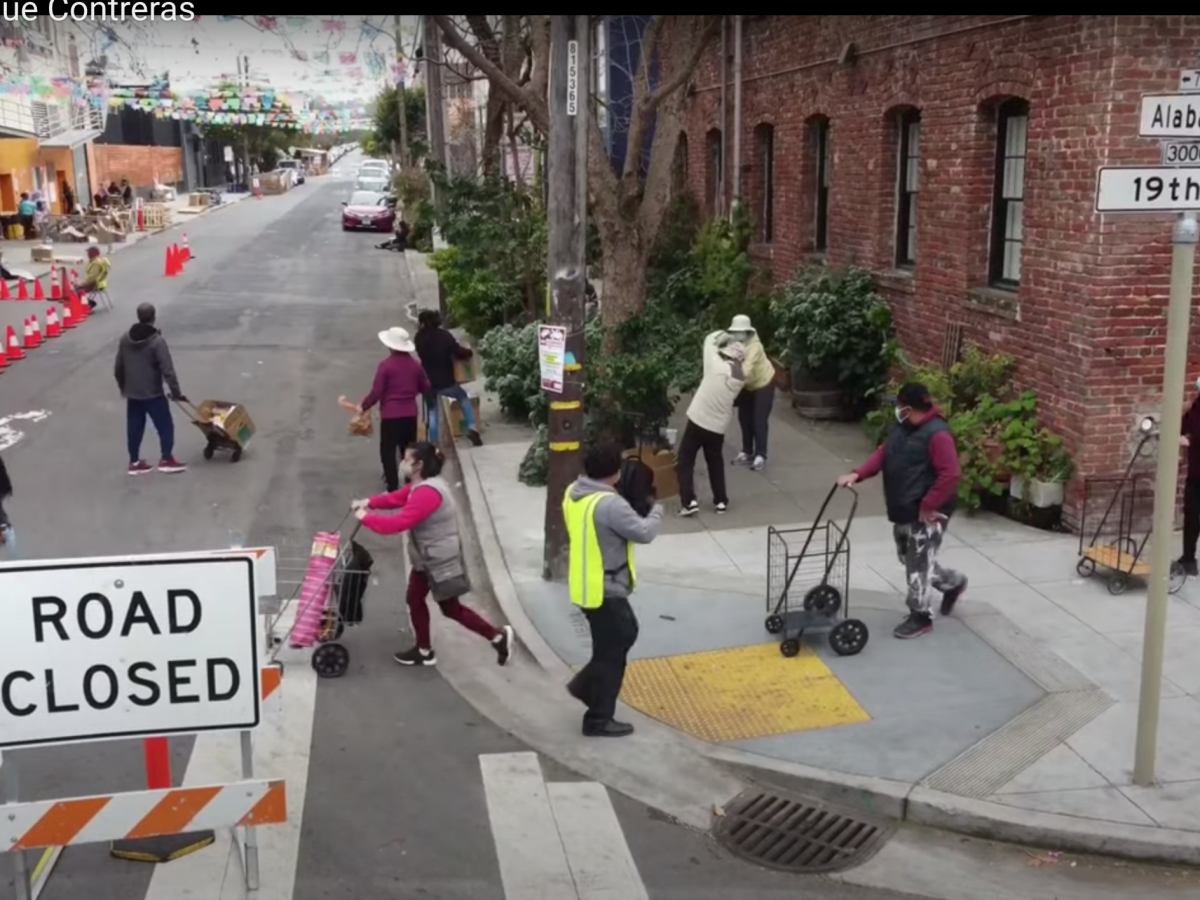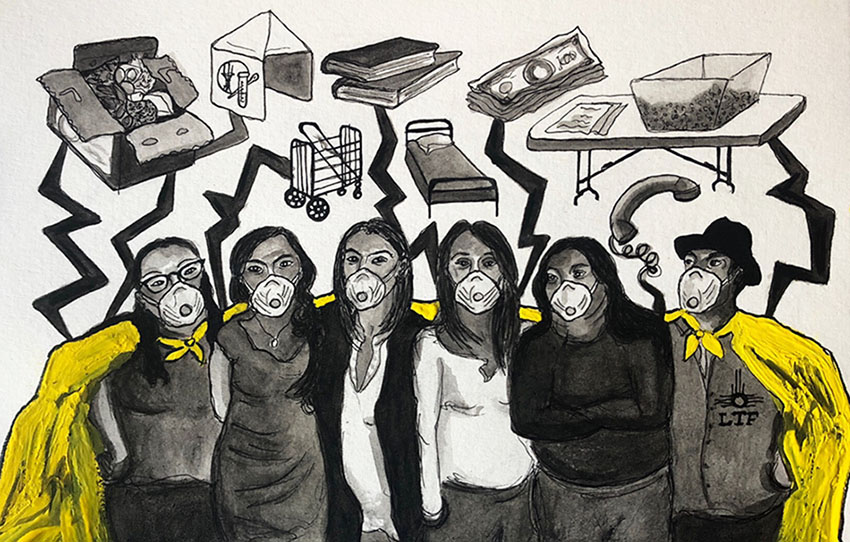Three years ago, the plan was different.
Filiberto Hernandez, a homeless senior, was cobbling day laborer jobs in the Mission District. A.J. Burleson had moved up at a tech startup in Oakland. Shalom Bandi was about to finish school and, like other soon-to-be 20-something graduates, was ostensibly on the cusp of the rest of her life.
Then the homeless shelters went on lockdown. Burleson was laid off. The University of California, Los Angeles, told Bandi to go home. Hadn’t they heard? A fatal virus was spreading worldwide and, as companies shrunk their staff, it seemed that every job listing froze — except those in healthcare. For a select bunch, the pandemic would take their lives on a dramatic detour.
The pandemic transformed dozens of Bay Area residents with minimal to zero experience in medicine into full-fledged community health workers. Now, three years and seven months later, the benefits of that surge are clear.
These workers are filling vacancies at local medical systems like the University of California, San Francisco, or the Department of Public Health, and diversifying public health or medical schools. They are coordinating vaccinations and supplies to boost health in Bay Area neighborhoods. Through a combination of skills, they are chipping away at historic health inequities in San Francisco and Alameda counties by working in communities long neglected by medicine.
“I hope that the institutions who benefited from the community coming together and being part of the solution remember that the community is part of the solution,” said Dr. Kim Rhoads, director for engagement at UCSF’s cancer center.
Their work has had an outsize effect on San Francisco’s vulnerable, and is proof that hiring from the community can be valuable to combatting medicine’s diversity problem.
“They want to take action,” Rhoads said.
New skills, new jobs

Three days a week, the Mission Language Vocational School offers a phlebotomy class that teaches the joys of drawing blood.
While the class isn’t new, interest appeared to increase in the pandemic, students said. Many pupils were inspired to enroll after volunteering with Mission-based pandemic groups. Shalom Bandi, an Indian immigrant and astrophysics major, was one of them.
Bandi had nearly finished her degree at UCLA before the pandemic kicked her out; she got her diploma by mail. By May 2020, there weren’t any openings for relevant astrophysics jobs, and Bandi’s visa expiration loomed. “I was losing my mind,” she said.
Then she came across a Latino Task Force volunteer job to help deliver food, and got it. “It’s definitely not something that I was thinking about before,” Bandi said.
Little did Bandi know she’d be doing much more than pass out food. Unidos en Salud — a collaboration between the Latino Task Force and UCSF — researched, tested and cared for thousands of Latinx people who represented 50 percent of covid cases during the first year of the pandemic. She started facilitating testing and was eventually promoted to Health Coordinator, the person who runs the Hub at 701 Alabama St. But she wanted more.
For months, Bandi saw BayPLS, a local phlebotomy service born during the pandemic, set up white tents to give vaccines at the Alabama Street site; she herself was vaccinated by them four times. “I just realized how the community is so grateful for a [service] like that,” Bandi said. “I was like, ‘Okay, I can do this, too.’”
So she set out to become certified, attending a class next door to the Hub. Thirty other students, many of them Bandi’s coworkers, she said, spent five months earning their certification, which requires at least 50 blood draws. “Knowing the [Latino Task Force and Unidos] are so helpful to their own community just makes me feel good that I am able to be that person for my community,” Bandi said.
Bandi wasn’t the only recent grad who accidentally entered the phlebotomy industry. From her spiffy new desk at the BayPLS on a recent weekday, Susy Rojas laughed at the girl she used to be in 2020, one who could not find jobs related to her biology degree in wildlife, fish, and conservation from the University of California, Davis, and who turned to Uber for money.
Rojas, too, was sucked into the health field out of the Mission’s need; Her mother, Susana Rojas, helped lead the Latino Task Force’s testing sites, and Susy Rojas helped and later coordinated care packages for the sick patients. The job developed professional skills, and diminished her misanthrope tendencies. “Clearly, I’m better at interacting to the point where it’s, you know, I’m not an asshole,” Rojas laughed.
She took a break for a year, then returned, feeling the job wasn’t done. In September 2022, the founder of BayPLS sent her an email: Was she interested in being a program coordinator? “I told him, ‘Let me think about it,’” Rojas said. “I think that same day, I replied, ‘Yep. Here’s my resume.’”
Her desk job involves fighting health disparities “in a different sense,” Rojas said, from the private sector instead of on the ground. But that experience imbues her new role, helping anticipate needs and facilitating community partner transactions.
Just last week, Unidos en Salud announced it received some 1,000 shots of covid boosters, administered from BayPLS, which Rojas helped coordinate.
Hiring from community

When Dr. Rhoads decided to launch covid testing in Bayview Hunters Point, she knew she needed local expertise. “I would not have been able to leverage the resources that UCSF has … if they weren’t being delivered by the people in the community,” Rhoads said.
Who to call on? “‘You have to get AJ Burleson,’” someone told her. Burleson had grown up across the street from Leola M. Havard Early Education School, which was also across from her planned testing pop-up.
Before the doctor called him, Burleson had just been let go from his tech job. Working outreach at the test site interested him; he accepted. “I’ve always actually wanted to work in health care, in a hospital, or something like that. I always thought that was really cool,” Burleson said.
He excelled. The volunteer gig became paid, and Burleson was embraced by residents who would not readily open the door to a doctor. He learned how to relay public health messages that convinced Black residents to get tested and vaccinated.
As Rhoads expanded her health efforts to create Umoja Health, a collaboration focused on Black health in the Bay Area, Burleson stayed on. They planned pop-ups in East Oakland and Bayview where, besides offering covid services, they check cholesterol and monitor blood pressure. “We’re absolutely reaching people who normally wouldn’t get those symptoms checked,” Burleson said.
To Rhoads and Burleson, it’s essential work. Black residents have health inequities in several fatal diseases; they died from covid at a rate three times higher than white people, at one point during the pandemic. But the health disparities go beyond covid: Black Americans are 30 percent more likely to die from heart disease than white people, and 60 percent more likely to be diagnosed with diabetes.
Around 2021, and well into the work, Rhoads suggested Burleson become a medical assistant — quicker and cheaper than medical school (Bay Area Medical Academy now offers free courses), with a more immediate impact on public health.
Burleson had doubts. “You know, getting a job … It’s difficult,” he said. And “it’s pretty white. You don’t see people that look like me.”
But, Rhoads, who is Black, said that was the point: Black communities needed more Black medical workers. Indeed, Burleson said he“noticed how people react differently when [the health workers] look like me,” he said. “That’s one of those reasons I stick around.”
He enrolled at Bay Area Medical Academy on Bush Street in September 2021, and became certified in October 2022. The school’s student body is 46 percent Hispanic, 21 percent Black, and 5 percent white; a 2017 study suggests medical schools’ student bodies were 9 percent Hispanic, 7 percent Black, 25 percent Asian, and 59 percent white.
Many are hired soon after graduating, filling jobs in high demand at local medical centers like UCSF, the health department, and Zuckerberg San Francisco General Hospital. Burleson took a job at Carbon Health, a healthcare chain.
His technical knowledge and ease helps him give reasonable care to patients; his identity helps him identify bias patients might face.
In some ways, Burleson is the prototype. Rhoads launched two youth development programs focused on health during the pandemic, hoping to funnel young people into medicine. Burleson is one huge success in her eyes.
“I think that’s really the legacy of what we’re doing here: Creating spaces for people to advance themselves and to build capacity” she said.
Health all around
Two Latinas chatted excitedly in Spanish, oohing over the signed thank-you from the city they’d just received. They rode Muni home from a Mission screening of “Heart of Access,” a documentary about community members’ roles during covid in poorer parts of San Francisco.
While many volunteers later left the health field, the skills they built translated to other industries. Temi Salako, who oversees an Umoja youth program, says that’s as important to establishing healthy communities. “We don’t want people to think the only way to contribute to healthcare is to be a doctor or nurse,” Salako said. “It’s multidisciplinary.”
In 2020, Filiberto Hernandez, then 60, was homeless and living at the St. Mary and St. Martha Lutheran Church on South Van Ness temporarily. Like other undocumented immigrants, he found jobs through the Day Laborer Program. When the pandemic hit, his shelter was locked down for two weeks, and he was transferred to a hotel.
He learned Unidos en Salud needed someone at the 24th Street testing site who could speak Spanish. Anyone who has been to 24th and Capp knows Hernandez, the familiar face tasked with line management for vaccine and test appointments. “It was chaos,” Hernandez said. “The lines were very long.”
Hernandez befriended neighbors, some of whom would drive by to ask about his day. He answered questions about the vaccine in Spanish, and saw, firsthand, how many Latinx neighbors went to the site first because they were afraid to go to the hospital, concerned about cost or anxious over documentation. He reassured them. Hernandez felt good; he was doing something for his community.
In his former solitary contracting work, “you talk to nobody during the day,” he explained. “But when you work in a vaccine site, it’s more interaction with the people,” Hernandez said. “I got some skills to communicate. I never knew I could do it, and I did it.”
The experience inspired him to work for a Latinx community organization.
Earlier this summer, a young person present at “The Heart of Access” Bayview screening at the Southeast Community Center shared their own impact fighting covid in the pandemic. “I was from the neighborhood that we were actually helping,” they said. “It felt good — helping my people and people that look like us, and not people that went to school and tried to learn about us.”
At the time, they recalled community organizations taking care of her, too, like appearing at her court dates. Today, they work as a Spanish interpreter for the city’s Homeless Outreach Team (HOT), they said — another population with health disparities — and showed off their jacket to a room-full of applause. That’s in part thanks to the opportunity health work gave them.
“We were, honestly, a family,” they said. “That job honestly saved my life in so many ways.”





The pandemic is NOT over so our work is not over. Getting folks to take the new boosters (including the Novavax) along with flu and RSV jabs are just some of the steps we can – and should – continue to take.
Get vaxxed 💉 Get boosted 💉 Mask up 😷 Social distance ↔️